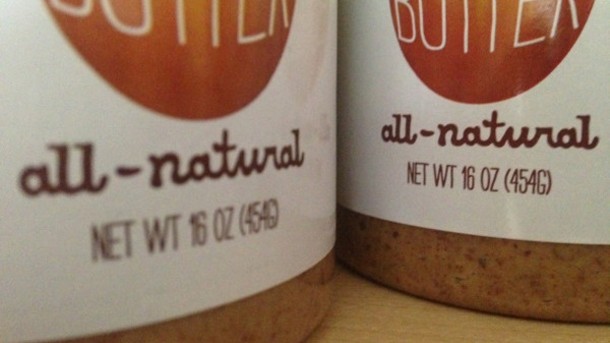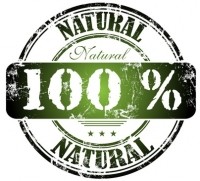Special edition: Natural & Clean Label Trends
RD: ‘Natural’ claim tarnished, but still meaningful

“The term is becoming a bit damaged, if you will, by the perception that there is no regulatory definition," Dr. Adams Hutt told FoodNavigator-USA. “So therefore it’s being used in many ways that frankly, I think have been attempts to invoke minimally processed status on something which is not so minimally processed. That’s where we’ve gotten ourselves in trouble and the luster on the natural claim has been tarnished.”
The lack of regulatory definition by the FDA or the USDA has admittedly given manufacturers a longer leash in terms of how they qualify it, but Dr. Adams Hutt maintains that there are certainly clear guidelines on what the agencies deem natural and not so natural.
The FDA does not object to use of the term if the food does not contain added color, artificial flavors, or synthetic substances. The USDA’s label approval program similarly says that any label on meat, poultry and egg products bearing a “natural” claim must be minimally processed and contain no artificial ingredients. “And they grant or don’t grant approval on ingredients claimed as natural on daily basis,” she noted.
The fuzziness surrounding the natural definition could be partially responsible for growing interest in organic, whose standards are very clearly defined by the National Organic Program.
“It’s not just about standard on food product, it’s about the method of manufacture—it’s quite comprehensive, rigorous and robust. It links to sustainability in a certain sense, to being mindful of resources to create that food item,” she said. But organic is much more amenable to minor use (specialty) crops such as kale and spinach as opposed to commodity ingredients, and appears to resonate best among health-conscious populations who are willing to pay a premium for the organic seal.
Still, there’s a shift happening among the majority of consumers, Dr. Adams Hutt says, toward asking for the food industry to provide cleaner label, minimally processed foods—not only for their perceived healthfulness, but because they carry related connotations that are increasingly important secondary and tertiary attributes, such as ethical production practices.
‘Natural’ has closer-to-the-earth connotation
“The degrees of persistence on this demand vary from a consumer who’s very health conscious to someone not paying as much attention. The bulk of folks are somewhere in between, but the majority of them are looking for a cleaner label,” she said. “There’s a push against artificial, synthetic ingredients and a move toward something closer to the earth. There are many connotations that surround organic and natural as well—ethics, treatment of animals and fair trade, which appeal to the values of some individuals.”
So how can a manufacturer get this across via front-of-pack descriptors? Unfortunately, “minimally processed” is even less defined than natural at this point, though a growing number of products are bearing this claim, Dr. Adams Hutt said. Others use “simply”, “simple”, “wholesome” or “pure” to convey the message—“all words that try to invoke this notion minimally processed, though they’re ill-defined,” Dr. Adams Hutt said, adding that it doesn’t necessarily make them meaningless.
“It’s part of the brand recognition that manufacturers and retailers trying to pick up and carry. These terms have meaning, intent and consumer appeal because they convey clean label, a minimal number of ingredients, minimal preservatives and consciousness of what people are eating.”
The current market offers lots of opportunity for the ingredient suppliers to offer cleaner label ingredients such as texturizers, antioxidants, starches and gums. But it’s an art, as Dr. Adams Hutt admitted.
“There is a lot of really positive opportunity for the industry, particularly among ingredient suppliers to offer cleaner ingredients and R&D support,” she said. “But it’s not easy to replace some of these additives; it often complicates the food item to point where it’s quite constraining.”
Indeed, regardless of how clean they can make the ingredient deck, they have to be sufficient replacements, especially chemical preservatives for stability. “They need to be fully understood by the ingredient supplier so when they propose the replacement, it will be effective. At the end of the day, food safety and shelf life are extremely important for these products.”
Indeed, for all the trouble “natural” has caused, Dr. Adams Hutt says the industry can’t complain too much, given that it largely stems from consumers’ desire to improve their lifestyles and health.
“As a person interested in health and wellness, nutritionist, food scientist, it’s a great time to be in the food industry”, she said. “It’s challenging, as we’re letting some older approaches to food science and technology pass. But consumers want to be healthier, and they’re demanding more options as a result, so we have to provide them. We can’t criticize them for it; we’ve been asking them to do this for decades.”
----------
What is natural, and who decides? Plantiff’s attorneys? C onsumers? Retailers? Are ‘all-natural’ claims still resonating with consumers or are other cues more important? And how does a consumer determine if a food is less processed?
We've gathered a panel of experts for a 60-minute debate on these topics and more, which will be broadcast live on Sept. 30.
The FoodNavigator-USA Natural & Clean Label Trends Forum will start at 11:30 am EDT.
Register here. (IT'S FREE!)
















